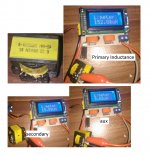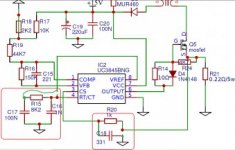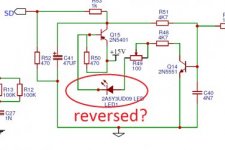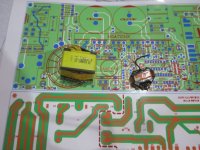Dear Silvio,
First I clarify my statement above that I do not need (interested) the PFC applies to me personally, not in general.
from what I understand, reactive power only circulating in system, in one cycle at a short time a large current is needed to charge the capacitor and supply the load, but in the remaining time cycle the capacitor will transfer energy to the load.
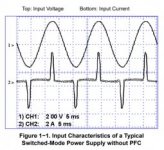
(source :
PFC handbook by onsemi)
but this peak current is seen by the circuit breaker, not good for power lines and for electricity provider.
Please correct me if I am wrong
I think this will be an interesting open discussion :
1. Sometimes I think whether the reason for big manufacturing is not using PFC, is it only because of price issue?
2. Does the regulation (American or European) not force amplifier manufacturers to use PFC?
3. Is it because in a building there is usually a power factor correction system?
I made a list of amplifiers that use smps below :
most of them use "The legendary chip" like TL494 and SG3525, same designer?
only class D from yamaha (XMV8140)uses PFC
1. Yamaha
– Yamaha EMX5000 : Halfbridge, unregulated, IR2153
– XMV8140 (class D IRS2092) : halfbridge, unregulated, SG3525 with PFC
– T5n (EEEngine) : halfbridge, unregulated, SG3525
– XP5000 (EEEngine) : halfbridge, unregulated, SG3525
– PC9501 (EEEngine) : halfbridge, unregulated, SG3525
– YST-SW800 : self oscillating, halfbridge, unregulated
2. C-audio
– Pulse series : halfbridge, unregulated, SG3525, discontinuous resonant
3. Crown
– CTS 4200A : halfbridge, unregulated, SG3525
-CTS600, CTS1200 : halfbridge, regulated, UC3846
-CDi2000 : halfbridge, unregulated, TL494
-XTi4000 : halfbridge, unregulated, TL494
-XLS2500 : halfbridge, unregulated, FAN7387
-CE4000 : fullbridge, unregulated, UCC3895DW, PFC
4. Labgruppen
– Fp3400 : flyback, unregulated, UC3851
– Lab4000 : flyback, unregulated, UC3851
– FP10000q: TD class, flyback, unregulated
5. QSC
– PLX series (PLX-1202): halfbridge, unregulated, SG3525
– Powerlight Series : halfbridge, unregulated, SG3525
6. NAD
– M22 : halfbridge, unregulated, synchronous rectifier, TL494
7. BEHRINGER
– PMP500 : SPS1000, halfbridge, unregulated, IR2153
– SMPSU18 : halfbridge, unregulated, SG3525
8. CARVIN
– BX1500 : halfbridge, unregulated, resonant, IR2153
9. Mackie FRS2800
- halfbridge, unregulated, KA3525
regards,
res


